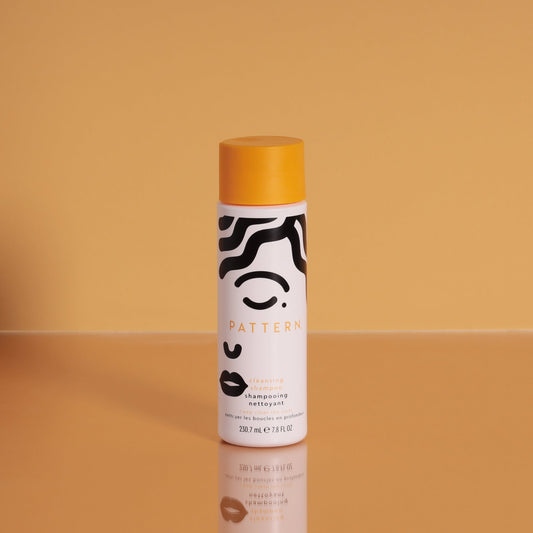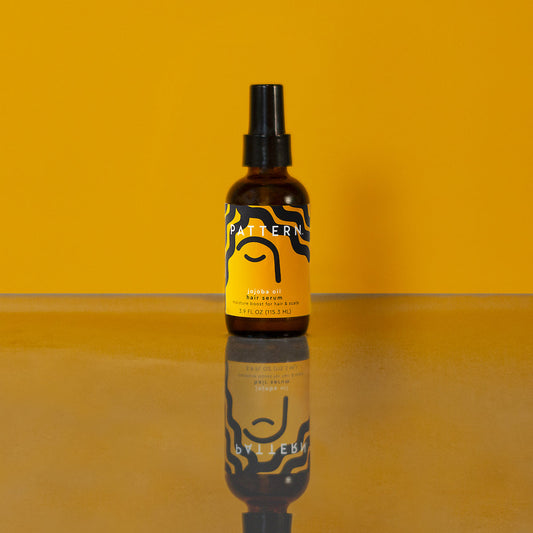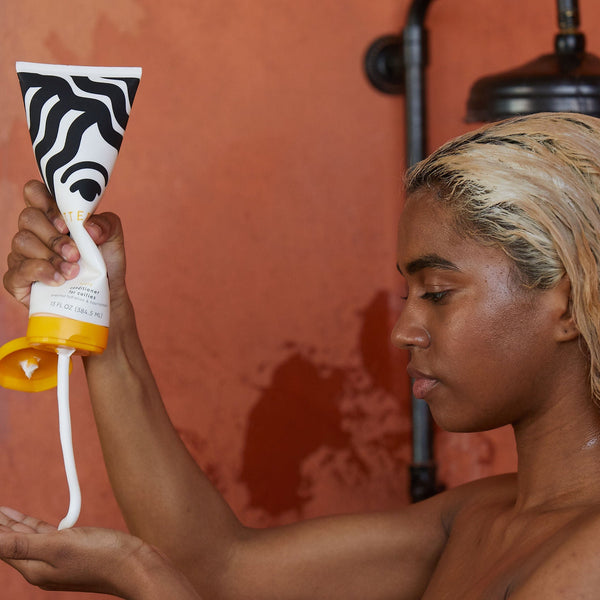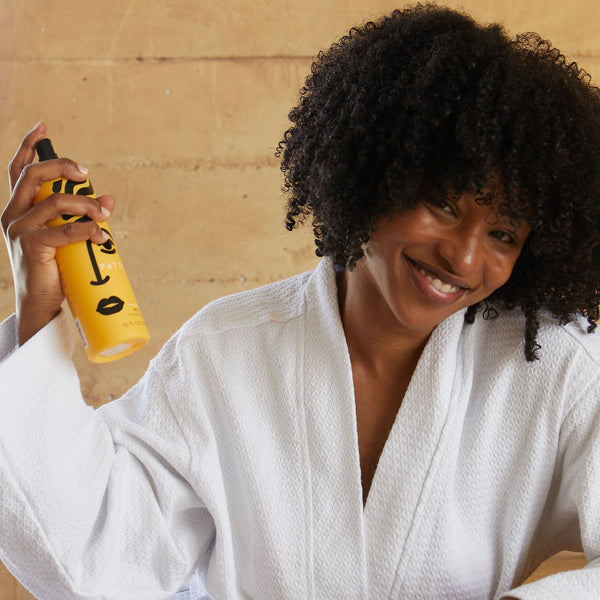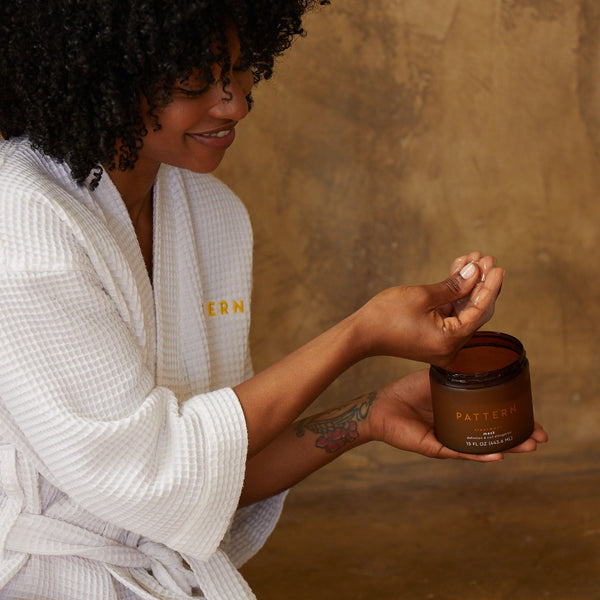When it comes to finding the right hair product for your natural hair, it can feel daunting. Every hair care product you put in your hair is important and the type of shampoo you use can make or break your hair, literally. We know the feeling of strolling down the shampoo and conditioner aisle just to be there for an hour trying to figure out which shampoo is right for you. Trying to understand all the different ingredients you should or shouldn’t be using can be confusing, but don’t stress because help is on the way. We are going to highlight the most common, yet often concealed, harmful ingredients found in shampoo products, which ingredients to avoid in shampoo, and which shampoo and conditioner for curly hair types you should look out for. It’s time to let go of the old and welcome the new!
How do I choose a good shampoo?
Choosing the right curly hair products can be especially difficult for textured hair since many traditional shampoos carry chemicals and ingredients that are harsh. Our beautiful strands are fragile and require natural ingredients to maintain their strength and health. Here are two things to consider when looking for a shampoo that’s right for you:
Hair type
Based on your hair type you will want to look for different types of ingredients in shampoos, as well as consider how often to wash natural hair to maintain its healthy texture and shine. For example, If you have color-treated or dry hair look for mild shampoos with non-cyclic silicones, glycerin, and oils.
Scalp health
The health of your scalp will determine the product that’s right for you. If you are prone to dandruff, look for fungicides like ketoconazole or tea tree oil. If you experience scalp irritation try to find an all-natural shampoo.
What ingredients should I avoid in shampoo?
No matter your hair type or scalp health, there has been tons of research on which ingredients and chemicals we should steer clear of when choosing a shampoo. Here are the top 10 shampoo ingredients to avoid:
#1 Parabens
This is one of the most common ingredients people with natural hair know that they should avoid. Parabens are chemicals used as preservatives in many different beauty and hair care products to prevent bacterial growth. They also contain estrogen, which is the same hormone that has been linked to an increased risk of breast cancer.1
#2 Sodium Lauryl Sulfate (SLS)
SLS is a type of “surfactant,” or in non-scientific terms, the stuff that makes your shampoo foam or suds up. This chemical is used in soap, detergent, and many other skincare and cosmetic products. It’s great if you need to get the grease out of a pot, but not so great on our skin or hair. SLS can strip our hair of natural and necessary oils that cause irritation, itching, and allergic reactions.
#3 Sodium Laureth Sulfate (SLES)
It sounds quite similar to the last product we mentioned. The difference between them is the process by which they are made. SLES is known to be more gentle than its cousin SLS, but they are both still harmful and should be avoided. SLES is also linked to skin irritation, dryness, and negative health effects.
#4 Formaldehyde
Formaldehyde is a chemical used as a disinfectant and germicide in household products and consumer products, including shampoo. This chemical is known to cause allergic reactions, irritation, and worsen existing skin conditions, like eczema.
#5 Cyclic silicones
There are many variations of silicone used in beauty and personal care products. While some are non-cyclic silicones, which are good, some are cyclic silicones, which are bad. Silicones are used to give your hair the slip and shine that your curls and coils love, but the bad ones like cyclic can cause breakouts and seal the hair shaft completely to prevent moisture from getting into your hair.
#6 Phthalate
Phthalate is one of the most commonly used chemicals found in a variety of products, including shampoo products. It’s used to soften and help the shampoo formula absorb better. Phthalate is also used to maintain the fragrance in shampoos. You should avoid this in your products because it is linked to reproductive cancers and miscarriages in pregnant people and allergies, premature puberty, and eczema in infants and adolescents.3
#7 Triclosan
This antibacterial chemical used in shampoos should be avoided due to its negative effects on your skin and overall health.
#8 Alcohol (well, some of them!)
There is a misconception that alcohol is bad for our hair, but there are some alcohols including cetearyl, cetyl, and stearyl alcohol that have moisturizing properties to keep your hair hydrated and strong. The alcohols you should avoid in shampoos include ethanol or ethyl alcohol, denatured alcohol, methanol, isopropyl alcohol, SD alcohol, and benzyl.
Luckily, PATTERN Beauty products are Paraben-free, free of SLS/SLES, color safe, free of Cyclic Silicones, Phthalate-free and Formaldehyde-free.
What ingredients should I look for in shampoo?
Based on the needs of your hair you will want to look for these natural ingredients:
- Essential oil like tea tree, peppermint, lavender, and lemon
- Plant oil like jojoba oil, argan oil, and sunflower seed oil
- Olive oil
- Avocado
- Aloe
- Coconut oil
- Honey
These are the perfect replacements to cleanse your hair without stripping it of natural oil. If you want your scalp and hair to feel softer and hydrated, look no further than PATTERN. Our Hydrating Shampoo and Curl Cleansing Shampoo products are absent of harsh, hair-stripping solvents and contain the perfect natural ingredients for your hair type and texture. You don’t have to ditch the idea of shampoo altogether or resort to the No Poo Method. It just takes finding the right product that is free of any harmful chemicals to keep your hair clean and refreshed.
Check the ingredients in your shampoo products to see if they contain any of the listed harmful chemicals or solvents. Next time you’re looking for new natural hair bundles, always check the label before purchasing to ensure there are no harmful chemicals that could be a danger to your hair or your overall body and health.
Are you ready to achieve those healthy, juicy curls?
Sources:
- "Parabens". BCPP. https://www.bcpp.org/resource/parabens/
- "Phthalates". BCPP. https://www.bcpp.org/resource/phthalates/
- Lisa Rapaport. "Chemicals in cosmetics, soaps tied to early puberty in girls". Reuters. Dec 4, 2018. https://www.reuters.com/article/us-health-puberty-endocrine-chemicals/chemicals-in-cosmetics-soaps-tied-to-early-puberty-in-girls-idUSKBN1O301I
- Megan Mcintyre. "Do Silicones Deserve Their Bad Rap?". Beauty Independent. https://www.beautyindependent.com/do-silicones-deserve-their-bad-rap/
- "Silicones in hair care – all you need to know". The Hair Fuel. April 1, 2019. https://www.thehairfuel.com/silicones-in-hair-care-all-you-need-to-know/
- "SLS vs SLES". Bubblet Cosmetics. June 19, 2018. https://bubbletcosmetics.com/blogs/blog/sls-vs-sles
- "What are SLS & SLES?". Seatree. Sept 16, 2020. https://www.seatree.org.uk/blog/sls-sles/
- Marnie Vinall. "Shampoo Ingredients for Different Hair Needs: What to Look For". Healthline. Oct 28, 2020. https://www.healthline.com/health/shampoo-ingredients-for-different-hair-needs#takeaway
- Haircoach. "15 Harmful Shampoo Ingredients to Avoid". Nutrafol. Apr 16, 2018. https://nutrafol.com/blog/15-shampoo-ingredients-to-avoid/

